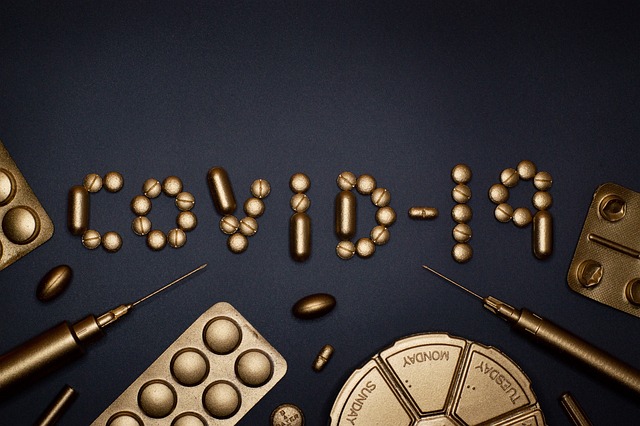Behavioral Activation Therapy (BAT) is a depression treatment program that focuses on engaging individuals in enjoyable activities to promote positive emotions and meaning, rather than just talking through thoughts and feelings. This science-backed approach aims to disrupt the withdrawal cycle of depression by stimulating dopamine production and reactivating the brain's reward system. BAT encourages participation in structured activities that bring pleasure, mastery, and social connection, fostering optimism and improved mood regulation. As an effective yet flexible method, BAT is gaining recognition as a powerful tool within depression treatment programs, offering both standalone and integrated support through digital platforms.
Behavioral Activation Therapy (BAT) is a revolutionary approach in depression treatment programs, focusing on activating enjoyable and meaningful activities to alleviate symptoms. This comprehensive overview explores BAT’s neurobiological foundations, key principles, and its unique distinction from traditional therapies. We’ll delve into the components of effective programs, practical implementation guides, and real-life success stories. Additionally, we’ll discuss challenges, limitations, and the future prospects of BAT in transforming depression care.
Understanding Behavioral Activation Therapy: A Comprehensive Overview

Behavioral activation therapy (BAT) is a form of psychotherapy designed to help individuals manage and overcome symptoms of depression by encouraging them to engage in activities that promote positive emotions and meaning. Unlike traditional talk therapy, BAT focuses on changing behavior rather than just exploring thoughts and feelings. It’s a practical approach that empowers people to take an active role in their recovery by identifying and participating in activities that they find enjoyable or rewarding.
This therapeutic method is structured around the idea that avoiding or withholding from enjoyable activities can contribute to depressive symptoms. By contrast, BAT promotes participation in behaviors that have been avoided or reduced due to depression, aiming to increase pleasure, engagement, and a sense of accomplishment. In essence, it’s about using activities as a means to activate and boost one’s mood, making it a valuable component of many depression treatment programs.
The Science Behind BAT: Neurobiology and Its Impact on Depression

Behavioral activation therapy (BAT) is grounded in a deep understanding of neurobiology, offering a novel perspective on depression treatment programs. At its core, BAT centers around the concept that people’s behaviors significantly influence their brain function and emotional states. When individuals engage in enjoyable activities or adopt new routines, it triggers a cascade of neurochemical changes within the brain. This includes increased production of neurotransmitters like dopamine, often referred to as the ‘feel-good’ chemical, which plays a crucial role in motivation, pleasure, and reward.
Depression often leads to a maladaptive cycle where individuals withdraw from activities they once enjoyed, resulting in reduced dopamine release and further exacerbating symptoms. BAT challenges this pattern by encouraging patients to participate in activities that may initially feel tedious or neutral but hold potential for positive emotional experiences. Through consistent engagement in these activities, the brain’s reward system is re-activated, fostering a sense of pleasure and accomplishment, and ultimately helping to alleviate depressive symptoms.
Key Principles of Behavioral Activation Therapy

Behavioral Activation Therapy (BAT) is a highly effective depression treatment program that focuses on helping individuals understand and change their relationship with activities and experiences. At its core, BAT is built upon several key principles designed to empower clients in managing their mental health. One of the primary tenets is the concept of behavioral activation, which encourages patients to engage in activities that they find valuable and meaningful, ultimately enhancing their overall well-being.
This therapy program emphasizes the importance of guiding individuals to identify and participate in activities that promote a sense of pleasure, satisfaction, and accomplishment. By scheduling and prioritizing such activities, BAT aims to disrupt negative thought patterns and behaviors associated with depression. Through this process, patients learn to recognize and appreciate the positive impact of engaging in various tasks, fostering a more optimistic outlook and improved mood regulation.
How Behavioral Activation Therapy Differs from Traditional Depression Treatments

Behavioral Activation Therapy (BAT) stands out from traditional depression treatments by focusing on a patient’s daily activities and social interactions rather than solely on their emotions or thoughts. Unlike cognitive-behavioral therapy, which targets specific thoughts and behaviors, BAT encourages individuals to engage in activities that have personal meaning, even if they don’t initially feel motivated. This approach is rooted in the belief that increasing enjoyable activities can improve mood and energy levels, ultimately shifting one’s perspective on life.
Unlike depression treatment programs that often involve lengthy discussions or intensive interventions, BAT is more action-oriented. It guides individuals to identify and prioritize activities that promote pleasure, mastery, and social connection. By structuring days around these meaningful tasks, patients experience a sense of accomplishment and purpose, which can be powerful catalysts for recovery. This difference makes BAT an appealing option for those seeking a more hands-on, goal-oriented approach to managing depression.
Components of an Effective Behavior Activation Treatment Program

Behavioral activation therapy (BAT) is a key component of effective depression treatment programs, focusing on increasing engaging in activities that bring pleasure and meaning. The primary components of a successful BAT program involve several strategic elements. First, identifying and prioritizing enjoyable activities is crucial, tailored to the individual’s preferences and values. This could include hobbies, social interactions, physical exercise, or creative pursuits. Second, structuring daily schedules with specific times allocated for these activities helps individuals develop routines and a sense of structure, combating the apathy often associated with depression.
The therapy also emphasizes goal setting, encouraging individuals to set achievable goals aligned with their prioritized activities. This fosters a sense of accomplishment and motivates further participation. Additionally, cognitive reframing plays a role by helping individuals challenge negative thoughts surrounding activity engagement, fostering a more positive mindset. Through these interconnected components, BAT offers a practical and evidence-based approach to alleviate symptoms of depression by promoting meaningful involvement in life activities.
Implementing BAT in Clinical Practice: A Step-by-Step Guide

Implementing Behavioral Activation Therapy (BAT) in clinical practice involves a structured, step-by-step approach to help individuals overcome depression and enhance their overall well-being. First, assess the patient’s current behavior patterns and identify areas where increased engagement in meaningful activities is needed. This might involve discussing daily routines, hobbies, social interactions, or any activities that have been neglected due to depressive symptoms.
Next, work collaboratively with the patient to set specific, achievable goals that promote behavioral activation. These goals should be tailored to individual needs and preferences, focusing on small steps that lead to larger changes. As treatment progresses, guide patients through a series of strategies like scheduling structured activities, encouraging social engagement, and promoting enjoyable experiences. Regularly monitor progress, adjust the plan as needed, and integrate cognitive-behavioral techniques to challenge negative thought patterns that may impede behavioral activation.
Benefits and Success Stories: Real-Life Impacts of Using BAT

Behavioral activation therapy (BAT) offers a unique and effective approach to depression treatment programs. One of its key strengths lies in its ability to empower individuals by teaching them to recognize and engage in activities that bring them joy and purpose, ultimately improving their overall well-being. This form of therapy encourages patients to identify and challenge negative thought patterns, replacing them with more adaptive behaviors. As a result, many individuals have experienced remarkable real-life impacts from BAT.
Success stories abound, with numerous people reporting significant improvements in their mental health and quality of life. Some have found new hobbies and interests that not only provide distraction but also foster a sense of accomplishment. Others have reconnected with loved ones or pursued career paths they had set aside due to depressive symptoms. These transformations demonstrate the potential of BAT to not just manage depression but to enable individuals to live more fulfilling lives, breaking free from the cycle of negative thoughts and behaviors associated with depression.
Challenges and Limitations: Addressing Potential Barriers to Behavioral Activation Therapy

Behavioral activation therapy (BAT) is an effective depression treatment program, but it’s not without challenges and limitations. One significant barrier is patient motivation—individuals dealing with depression often lack the drive to engage in activities they once found enjoyable, making it hard to initiate and maintain therapeutic efforts. This apathy can be a result of the depressive episode itself or years of habit formed around avoidance and isolation.
Another challenge lies in tailoring the therapy to individual needs. BAT emphasizes identifying and engaging in meaningful activities, but what constitutes “meaningful” varies greatly from person to person. Therapeutic alignment with personal values and interests is crucial for success, which can be difficult to achieve, especially when working with diverse patient populations. Despite these hurdles, recognizing and addressing these potential barriers can help improve the accessibility and effectiveness of BAT as a depression treatment program.
Future Prospects for Depression Treatment: The Evolving Role of Behavioral Activation

As research continues to evolve, behavioral activation therapy (BAT) is poised to play an increasingly significant role in future depression treatment programs. BAT focuses on encouraging engaging in activities that promote a sense of pleasure and purpose, ultimately helping individuals break free from negative thought patterns and behaviors associated with depression. This therapeutic approach has shown promising results as a standalone intervention or when integrated into more comprehensive treatment plans.
The evolving landscape of depression treatment recognizes the importance of addressing not just symptoms but also underlying lifestyle factors that contribute to mental health. Behavioral activation therapy aligns with this shift by emphasizing behavioral changes, such as increasing physical activity, improving social interactions, and enhancing leisure activities. As technology advances, digital platforms and mobile applications are being developed to support BAT, making access to these therapeutic interventions more accessible and convenient for individuals seeking depression treatment programs.
